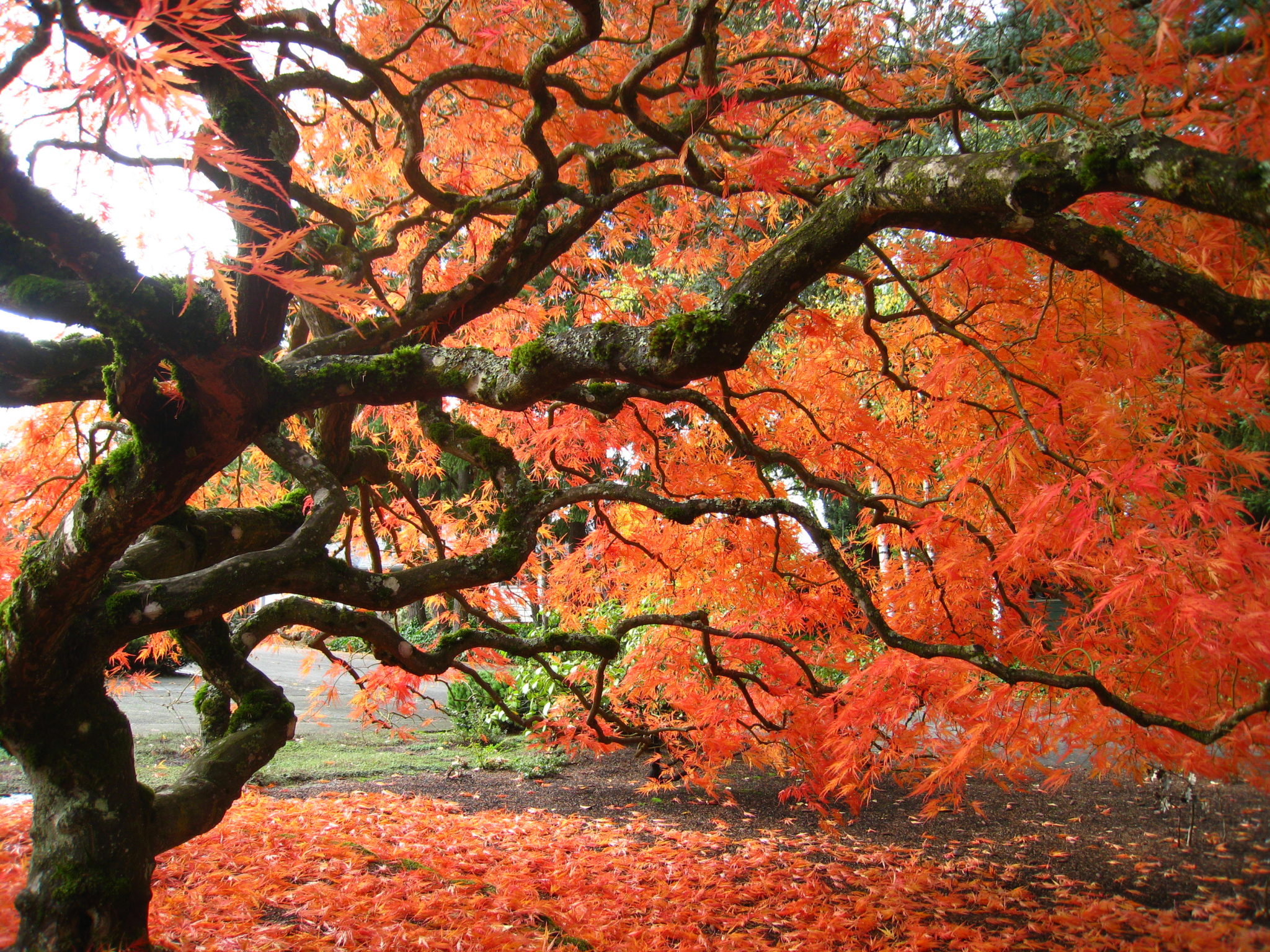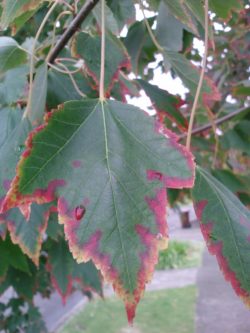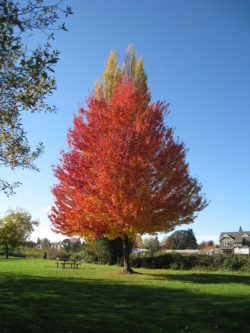
Fall Foliage
“Autumn is a second spring when every leaf is a flower” – Albert Camus
When the air turns cold and sunlight wanes in the Portland area around the end of September and early October, our hillsides and neighborhoods turn a fiery gold, red and orange as the deciduous trees prepare for the dormant season. As the green chlorophyll fades, the leaves’ other pigments are revealed and vary from tree to tree depending on temperature, species and sugar content. For example, carotene pigments color alder leaves yellow and orange and anthocyanin pigments color maple leaves red. The red pigment of the sunset maple leaf is just beginning to be revealed around the edges of the leaf below.

The contrast of brilliant color against the backdrop of deep green evergreen tree needles makes for a picturesque seasonal spectacle. The fiery red of the red maple can be seen throughout the downtown Portland area. The deep red of the Japanese maple often punctuates landscaping. The less common bright yellow fan-shaped leaves of the Ginkgo biloba flutter in the wind, then fall all at once. Strolling down your neighborhood street is likely to reveal many trees with spectacular fall color.

Some local Portland areas known for their fall color include Cathedral Park in N Portland, the Portland Japanese Garden in Washington Park, Laurelhurst Park in SE Portland, the South Park blocks, and the Ainsworth Linear Arboretum along NE Ainsworth Street. Breathtaking options further afield are the Columbia River Gorge, the West Cascades Scenic Byway and Highway 26 west to Seaside.
Although the Oregon fall color season is generally mid-September to mid-October, the best viewing locations throughout the state change daily and up-to-date information can be found at the Oregon Fall Foliage hotline 1-800-547-5445 or the Oregon Fall Foliage blog.
Your Leaves
After the deciduous tree leaves change color, they eventually fall from the trees. This carpet of leaves can kill underlying turf if left in place. After removing the leaves from your turf, consider composting them at home to return the nutrients to your yard and keep them out of streets and sewers. Metro gives home composting tips on their website.


